

 The most important factor for making great wines!
The most important factor for making great wines!
We can’t control the weather. The weather determines the size of the harvest and, to some extent, also the character of the wine. The overall climate (the longer term weather profile) always affects the wine, regardless of the weather. Weather and climate must surely be the most important factors for the style of a particular wine? Or is it?
Then we have the soil. Of course, some soil types are better than others for vines. It needs to be poor, etc. You’ve heard it before. But does it really matter if it’s volcanic, slate, limestone, clay, silex, etc? Well, most wine producers would probably say, yes it does. And many wine consumers too. But I have my doubts. Not least now, after spending two months in different wine regions in Europe, all with different soil types.
In each region, according to the producers, their respective soil gives that special “minerality” and “good freshness” to the wines. And yes, I often felt this minerality and freshness in the wines we tasted. However, if I had gone to the neighbouring winery or to the nearest shop and bought some local wines, I’m not certain that I would feel the same thing. I do not think these characteristics necessarily depend on the soil. I think they depend on the producer.
In fact, I think the wine grower is as important as the weather and the climate. Probably more important. Even in a very warm climate, skilled wine growers manage to achieve freshness and a kind of lightness and vibrancy in their wines, making them deliciously drinkable instead of heavy. And in a region where most wines are gulpable and easily forgotten, there are some talents who make extraordinary things.
The natural conditions can be as perfect as they possibly can be. But nature always gets a helping hand from the winegrowers and -makers, no matter how minimalistic they think they are. No wine “makes itself” as some producers like to say.
It is just that some helping hands are more skilled than others. And then it will be an intriguing and exciting wine. So, in fact, all years are “winemaker years”.
Do you agree, or not? Send us your view on this!
Whichever your opinion is, it is always a great experience to meet and discuss with those who make the wines. Listen to their reasoning, understand their philosophy. See how they work. And taste their products.
That’s why it is always so exciting to travel in wine regions, again and again and again.
So go ahead and book your next wine tour with the wine experts and the wine tour specialist. Book your next wine tour with BKWine now!
And finally I must of course mention that our latest book, on champagne and on growers’ champagne, has been given some very nice awards from the OIV and from Gourmand International. Read more on that in the Brief. We are very happy!
Britt & Per
PS: Recommend to your friends to read the Brief!
– – – – – –
What’s on at BKWine Tours
Winter 2019
- Chile-Argentina, January 20 – February 4, 2019
- South Africa, February 16-24, 2019
- New Zealand, March 11-26, 2019
- Bordeaux, April 10-14, 2019
Autumn
- New Zealand, November 20 – December 5, 2019
For more information please contact us on email or on phone (we’re on French time), or go to our wine travel site on www.bkwinetours.com!
We also make custom designed wine tours – on-demand tours for you and a group of friends, for your company (maybe to scout new winegrowers?), for a special event… We can combine winery visits and wine touring with other activities: gastronomic workshops, visit to an oyster farm, truffles hunting, cheese making, and more. More info on the custom designed and bespoke BKWine wine tours and travel here!
Read our book(s)
We have written several wine books, nine at the last count. One of them has been translated to English; the others are (so far) only available in Swedish. This is the one that is available in English: Biodynamic, Organic and Natural Winemaking, Sustainable Viticulture and Viniculture
All our books are on wine, but on different subjects: wines of the Languedoc, wine growing and wine making, the wines of France, Tuscany, Bordeaux, Piedmont, Burgundy, Champagne. Several have won prestigeous prizes and awards. Read more on our wine books.
From the World of Wine
In Brief
In short, news and stuff from the world of wine.
Our book “Champagne, the wine and the growers” winning awards by OIV and by Gourmand International
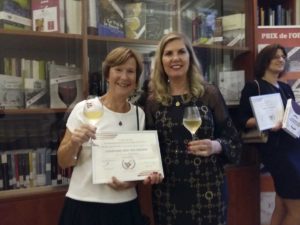 In the past year, our latest book “Champagne, the wine and the growers” (“Champagne, vinet och odlarna” in the original language) has been acclaimed and won prizes in two prestigious contexts, by the OIV, the International Organization of Vine and Wine in Paris, and by Gourmand International in China.
In the past year, our latest book “Champagne, the wine and the growers” (“Champagne, vinet och odlarna” in the original language) has been acclaimed and won prizes in two prestigious contexts, by the OIV, the International Organization of Vine and Wine in Paris, and by Gourmand International in China.
“Champagne, the wine and the growers” talks about the wine champagne and of course how and with what to serve champagne. A large part of the book is dedicated to the growers who produce the now so popular “growers’ champagne”, i.e. champagne made by smaller producers, often family-owned, who own their vineyards and make their own wine. (Unlike the famous “houses”, the famous champagne brands, that are often more industrially produced.) It is one of very few books (and the only one in Swedish) that explains in detail, with updated info and factually correct descriptions about everything you might want to know about this bubbly wine. The book is published in Swedish.
Champagne, The Wine And The Growers has been given three honours:
- First prize in the category French Wines, by Gourmand Awards Sweden
- Nominated (or “shortlisted”) and then winning third prize in the category French Wines, by Gourmand International
- Special Mention by the OIV (International Organisation of Vine and Wine) in the category Monographs and special studies
Read more on these honours and on the book on BKWine Magazine: Our book “Champagne, the wine and the growers” winning awards by OIV and by Gourmand International
Travel: Come on a wine tour to Champagne with BKWine.
Argentina’s top grape varieties: More Malbec and Syrah
Most planted grapes in Argentina
- Malbec, 40,000 hectares, 17.8%
- Cereza Rosé, 29,000 ha, 12.9%
- Bonarda, 19,000 ha, 8.4%
- Criolla Grande, 16,000 ha, 7.1%
- Cabernet Sauvignon, 15,000 ha, 6.7%
- Syrah, 13,000, 5.8%
- Pedro Ximenez, 11,000 ha, 4.9%
- Torrontes Riojano, 8,000 ha, 3.6%
- Moscatel Rosado, 7,000 ha, 3.1%
- Chardonnay, 6,000 ha, 2.7%
- Other grapes, 61,000 ha, 27.1%
- Totalt: 225,000 hectares
Source OIV
Travel: Come on a wine tour to Argentina and Chile with BKWine.
Gérard Bertrand buys neighbouring Mas du Soleilla in La Clape in Languedoc
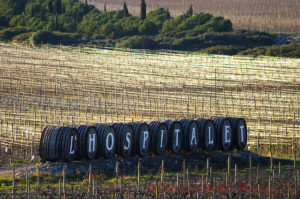 Gérard Bertrand’s empire in Languedoc is growing. He recently bought Mas du Soleilla, a 22-hectare vineyard adjacent to Bertrand’s headquarters Château l’Hospitalet in the appellation of La Clape. Mas du Soleilla was founded by Peter Wildbolz and Christa Derungs, both Swiss. 2002 was their first vintage. Mas de Soleilla is, like the Château l’Hospitalet, certified organic. Over the years, Peter Wildbolz has released highly appreciated wines, such as Les Chailles, Les Bartelles and Clot de l’Amandier.
Gérard Bertrand’s empire in Languedoc is growing. He recently bought Mas du Soleilla, a 22-hectare vineyard adjacent to Bertrand’s headquarters Château l’Hospitalet in the appellation of La Clape. Mas du Soleilla was founded by Peter Wildbolz and Christa Derungs, both Swiss. 2002 was their first vintage. Mas de Soleilla is, like the Château l’Hospitalet, certified organic. Over the years, Peter Wildbolz has released highly appreciated wines, such as Les Chailles, Les Bartelles and Clot de l’Amandier.
Château l’Hospitalet has 80 hectares of vineyards in La Clape but also a hotel, two restaurants, an art gallery and 900 hectares of hiking areas in the La Clape nature reserve. Gérard Bertrand is one of Languedoc’s largest wine producers and he owns another 300 hectares of vineyards in the Languedoc and also has a négociant business where he cooperates with 40 wine growers around Languedoc-Roussillon. Read more: lindependant
Disastrous floods in Languedoc
Heavy rain and floods of a rare violence in the department of Aude In Languedoc in mid-October caused major damage to vineyards and wineries, in particular in the Minervois and Cabardes appellations and, to a lesser extent, in Saint Chinian. 14 people died.
Several wine cellars were flooded, pumps and presses have been destroyed and a major effort will be needed to restore the vineyards in their original condition. The 2018 vintage that was already in the vats was unharmed. The big question is what lasting damages have been done that might affect 2019. Read more: mon-viti
No more spraying with herbicides in Anjou and Saumur
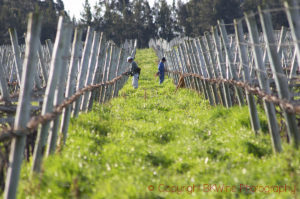 A tour of France’s vineyards today shows that more and more wine producers prefer to let the grass and the weed remain in the vineyard instead of removing it. Today, many refrain from chemical weed control, also those who are not organic. The region of Anjou-Saumur in the Loire Valley has gone one step further. For the region’s 20,000 hectares and 27 different appellations, it is now specified in the appellation rules that chemical herbicides are prohibited.
A tour of France’s vineyards today shows that more and more wine producers prefer to let the grass and the weed remain in the vineyard instead of removing it. Today, many refrain from chemical weed control, also those who are not organic. The region of Anjou-Saumur in the Loire Valley has gone one step further. For the region’s 20,000 hectares and 27 different appellations, it is now specified in the appellation rules that chemical herbicides are prohibited.
The producers can choose different methods: let the weed grow freely, plough regularly or use other mechanical methods like mowing, plant a cover crop that dominates over weed, or remove the weed with a natural product made for example from a plant extract. For the moment, however, there are not many of those on the market. But a few are in the pipeline. Read more vitisphere
A joke or false marketing?
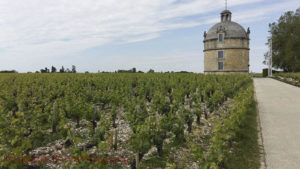 Wine producers should not deceive consumers when they promote their wines. This story is about Château de Reignac in Entre-deux-Mers. This chateau was bought in the 1990s by Yves Vatelot. His ambition from the very beginning was to make a high-quality Bordeaux. The natural conditions are there. In fact, he thinks that his soil is as good as that of some classified chateaux in Médoc. That’s why he put an advertisement in Le Figaro in 2011 with a big picture of the bottle and the text: Reignac Premier Grand Cru Classé, followed by an asterisk and then this text in a somewhat smaller print: “If this were true, few would buy it.” At the bottom of the ad was the price: 22 euro. Very modest compared to a premier cru classé.
Wine producers should not deceive consumers when they promote their wines. This story is about Château de Reignac in Entre-deux-Mers. This chateau was bought in the 1990s by Yves Vatelot. His ambition from the very beginning was to make a high-quality Bordeaux. The natural conditions are there. In fact, he thinks that his soil is as good as that of some classified chateaux in Médoc. That’s why he put an advertisement in Le Figaro in 2011 with a big picture of the bottle and the text: Reignac Premier Grand Cru Classé, followed by an asterisk and then this text in a somewhat smaller print: “If this were true, few would buy it.” At the bottom of the ad was the price: 22 euro. Very modest compared to a premier cru classé.
But you do not make joke unpunished with the concept of Grand Cru Classé in Bordeaux. Vatelot was sued by the Union of Grand Cru Classés 1855 and now, after an extended process, has lost also his appeal. But he does not give up. His last chance is the Cour de Cassation in Paris, France’s highest court. Admittedly, his fine was low, but he wants to be proven right. He thinks it is obvious that every literate consumer understands that his 22 euro wine is not a Premier Grand Cru Classé. Probably true, but I do not think that is the issue here. See the ad here vitisphere.com
Travel: Come on a wine tour to Bordeaux with BKWine.
World wine production in 2018 is very big despite problems in southern Europe
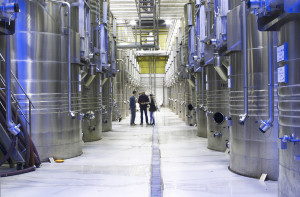 It has been a difficult year for many wine producers. The difficult fungal disease downy mildew has been widely present in Europe’s southern wine regions, where many producers have lost part of their harvest. The copious rains early in the season brought on the nasty fungus. However, the world production of wine in 2018 is still very big, according to recently published figures. The estimate of total global wine production is 282 million hectolitres, a high figure compared to 2017 with its historical low 251 million hl, and one of the highest harvests since 2000.
It has been a difficult year for many wine producers. The difficult fungal disease downy mildew has been widely present in Europe’s southern wine regions, where many producers have lost part of their harvest. The copious rains early in the season brought on the nasty fungus. However, the world production of wine in 2018 is still very big, according to recently published figures. The estimate of total global wine production is 282 million hectolitres, a high figure compared to 2017 with its historical low 251 million hl, and one of the highest harvests since 2000.
In Europe, all three of the big wine-growing countries had large crops: Italy (48.5 million hl) France (46.4 Mhl) and Spain (40.9 Mhl). In Europe, only Portugal (5.3 Mhl) and Greece (2.2 Mhl) had smaller harvests than 2017.
Outside of Europe, South Africa only managed a small harvest (9.5 Mhl) due to severe drought. Chile (12.9 Mhl) and Argentina (14.5 Mhl), on the other hand, greatly increased their production compared with 2017. The United States (23.9 Mhl) scored a normal harvest and is solidly anchored as the world’s fourth biggest producer. Australia (12.5 Mhl) decreased slightly and New Zealand (3 Mhl) again made a big harvest. Read more: OIV
Features
Features that we have published during the past month, with lots of reading for you.
Organic and biodynamic wines from Domaine Goisot
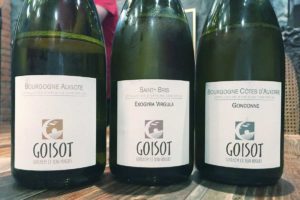 “Domaine Goisot is run by the eighth generation and is managed by Guilhem Goisot and his wife Marie. The domaine develops and is refined through, among other things, a modern approach to wine. In the early 2000s they took a stand to leave completely (synthetic) pesticides and since 2007 they are organically and biodynamically certified. Geographically, the village of Saint-Bris-le-Vineux, where they are located, is just southwest of Chablis.”
“Domaine Goisot is run by the eighth generation and is managed by Guilhem Goisot and his wife Marie. The domaine develops and is refined through, among other things, a modern approach to wine. In the early 2000s they took a stand to leave completely (synthetic) pesticides and since 2007 they are organically and biodynamically certified. Geographically, the village of Saint-Bris-le-Vineux, where they are located, is just southwest of Chablis.”
Read more about this unusual producer in Northern Burgundy in Sven-Olof Johansson’s article on BKWine Magazine: Generations of work in Burgundy impresses, Domaine Goisot.
Travel: Tour and taste Burgundy on a wine tour with BKWine.
A French three-star chef on his sources of inspiration
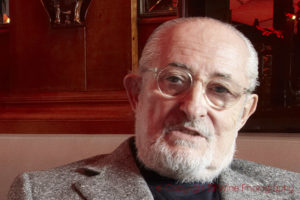 We have arrived at the last instalment in our video series on one of France’s greatest chefs of all times, Alain Senderens. In this part Senderens talks about, among other things, what were his sources of inspiration, his enthusiasm for Japanese gastronomy, and how Buddhism played a role in his development.
We have arrived at the last instalment in our video series on one of France’s greatest chefs of all times, Alain Senderens. In this part Senderens talks about, among other things, what were his sources of inspiration, his enthusiasm for Japanese gastronomy, and how Buddhism played a role in his development.
Watch the videos and read the stories on BKWine Magazine: Alain Senderens: Inspirations and other countries.
There you can also watch all the previous episodes with Alain Senderens, for example on his philosophy on food and wine pairing, an area in which he was an early pioneer.
Italian bubbles, French orange, diesel from Corsica – unusual wines to try this fall
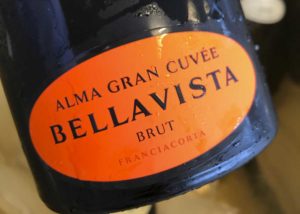 It is often outside the well-established segments that wine lovers can find the most interesting drinks. The regular big grocery stores’ ranges are often dominated by volume products, which are more often than not underwhelming. BKWine Magazine’s reporter Sven-Olof Johansson had the opportunity to taste a large selection of odd and unusual wines in the Oenoforos’ range this autumn. Here you will get his selection of what he thought was the most exciting wines, from Franciacorta, Savoie, Corsica, Champagne, and other places.
It is often outside the well-established segments that wine lovers can find the most interesting drinks. The regular big grocery stores’ ranges are often dominated by volume products, which are more often than not underwhelming. BKWine Magazine’s reporter Sven-Olof Johansson had the opportunity to taste a large selection of odd and unusual wines in the Oenoforos’ range this autumn. Here you will get his selection of what he thought was the most exciting wines, from Franciacorta, Savoie, Corsica, Champagne, and other places.
Read more about these wines on BKWine Magazine: Italian bubbles, French orange, diesel from Corsica – unusual wines to try this fall.
Exclusive top Burgundy in new and old version: Corton from Bonneau du Martray
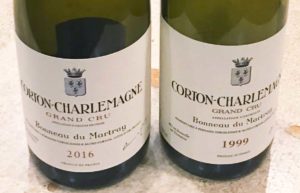 “On the Corton Hill in the northern part of Côte de Beaune you can find the largest grand cru vineyard in Burgundy, Corton. Here both red and white wines are produced. On those parts of the hill that are considered best for white wines, the appellation the appellation is Corton-Charlemagne. The largest vineyard owner on the hill is Domaine Bonneau du Martray. They own 11 ha, of which 9.5 hectares of Chardonnay are used to produce white Corton-Charlemagne and 1.5 ha of Pinot Noir are used to produce red Corton. (The entire Corton hill is divided into three pieces: Corton with 160 ha, Corton-Charlemagne with 72 ha and Charlemagne with 63 ha.)”
“On the Corton Hill in the northern part of Côte de Beaune you can find the largest grand cru vineyard in Burgundy, Corton. Here both red and white wines are produced. On those parts of the hill that are considered best for white wines, the appellation the appellation is Corton-Charlemagne. The largest vineyard owner on the hill is Domaine Bonneau du Martray. They own 11 ha, of which 9.5 hectares of Chardonnay are used to produce white Corton-Charlemagne and 1.5 ha of Pinot Noir are used to produce red Corton. (The entire Corton hill is divided into three pieces: Corton with 160 ha, Corton-Charlemagne with 72 ha and Charlemagne with 63 ha.)”
Read more on these wines in Tomas Eriksson’s article on BKWine Magazine: Corton-Charlemagne from Bonneau du Martray in new vintage, 2016.
Travel: Tour and taste Burgundy on a wine tour with BKWine.
Recommendations from an ambitious importer’s selection: Loire, Greece, Oregon, Campania, Ahr, Piedmont, New Zealand and much more
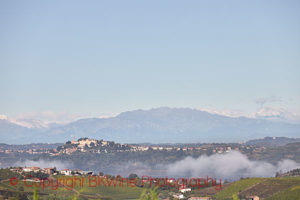 For a wine enthusiast, it is important to keep an eye on what the various importers have to offer. It is with the ambitious importers that you will find exciting wines, such as the importer Handpicked Wines. The big grocery chains selection is often largely populated by moderately exciting volume wines. (Especially in a country like Sweden where there is a – curious – monopoly.)
For a wine enthusiast, it is important to keep an eye on what the various importers have to offer. It is with the ambitious importers that you will find exciting wines, such as the importer Handpicked Wines. The big grocery chains selection is often largely populated by moderately exciting volume wines. (Especially in a country like Sweden where there is a – curious – monopoly.)
When Handpicked Wines recently made a presentation of their selection, BKWine Magazine’s reporter Carl-Erik Kanne was there. Here you get his best tips and recommendations: Loire, Greece, Oregon, Campania, Ahr, Piedmont, New Zealand and much more in Handpicked’s range.
Piedmont for dinner and for future birthdays, from Ferdinando Principiano
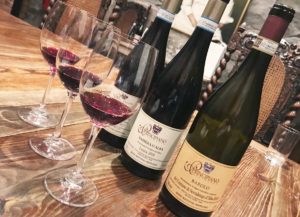 If you try to find out more about Ferdinando Principiano, it turns out that the family in the nineties tried to cater to a wide audience with immediate appeal. In the early 00s, the orientation had changed considerably and the winemaking had returned to a more traditional production. No added yeast, clinically pure in the wine cellar and a very restrained use of sulphur. The producer prefers organic farming but is not certified. Fining and filtering are not done. Caviste.se is an internet retailer that has offered Ferdinando Principiano wines to the market for several years and now also in 2018. Read more on these in Sven-Olof Johansson’s article on BKWine Magazine: Piedmont for dinner and for future birthdays, from Ferdinando Principiano.
If you try to find out more about Ferdinando Principiano, it turns out that the family in the nineties tried to cater to a wide audience with immediate appeal. In the early 00s, the orientation had changed considerably and the winemaking had returned to a more traditional production. No added yeast, clinically pure in the wine cellar and a very restrained use of sulphur. The producer prefers organic farming but is not certified. Fining and filtering are not done. Caviste.se is an internet retailer that has offered Ferdinando Principiano wines to the market for several years and now also in 2018. Read more on these in Sven-Olof Johansson’s article on BKWine Magazine: Piedmont for dinner and for future birthdays, from Ferdinando Principiano.
Travel: Come on a wine tour to Piedmont with BKWine.
Domaine Comte Georges de Vogüé Musigny Vieilles Vignes and some other luxurious Burgundies from 2016 and 2009
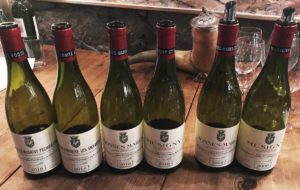 “Comte Georges de Vogüé is a highly regarded Burgundy producer in the village of Chambolle-Musigny with 12.5 ha vineyards, of which 9.9 hectares are located in the grand cru vineyards of Musigny and Bonnes-Mares. With 7.2 hectares, de Vogüé is, with a wide margin, the largest vineyard owner in Musigny, which usually gives the most elegant and perfumed red grand cru wines in Burgundy. In addition, their premier cru-possessions include 0.56 ha of Chambolle-Musigny Les Amoureuses, which is part of a handful of premier cru vineyards that everybody considers to be grand cru quality. The average level of vineyards they own is therefore very high.”
“Comte Georges de Vogüé is a highly regarded Burgundy producer in the village of Chambolle-Musigny with 12.5 ha vineyards, of which 9.9 hectares are located in the grand cru vineyards of Musigny and Bonnes-Mares. With 7.2 hectares, de Vogüé is, with a wide margin, the largest vineyard owner in Musigny, which usually gives the most elegant and perfumed red grand cru wines in Burgundy. In addition, their premier cru-possessions include 0.56 ha of Chambolle-Musigny Les Amoureuses, which is part of a handful of premier cru vineyards that everybody considers to be grand cru quality. The average level of vineyards they own is therefore very high.”
Read more on these wines in Tomas Eriksson’s article on BKWine Magazine: Domaine Comte Georges de Vogüé Musigny Vieilles Vignes and some other luxurious Burgundies from 2016 and 2009.
Travel: Tour and taste Burgundy on a wine tour with BKWine.
Wine tours
Some information about current and future wine tours with BKWine.
Bordeaux: beautiful chateaux and prestigious wines | wine tour
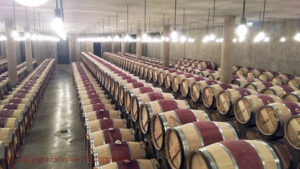 Bordeaux has some very beautiful chateaux, that’s no surprise. What is less known is that some are small family-owned chateaux with the owner-winemaker family doing all the work. Others are big and impressive. We visit both these categories and we taste new and older vintages of classic Bordeaux wines. Our fantastic chateaux lunches are memorable. They have become famous among our travellers. We will of course visit some Grand Cru Classé chateaux. The tour includes the most famous districts of Bordeaux: Médoc, Saint Emilion and Pessac-Léognan. You will learn about the latest trends in Bordeaux and how to pair Bordeaux wines with the local food. Join us for a great experience in Bordeaux.
Bordeaux has some very beautiful chateaux, that’s no surprise. What is less known is that some are small family-owned chateaux with the owner-winemaker family doing all the work. Others are big and impressive. We visit both these categories and we taste new and older vintages of classic Bordeaux wines. Our fantastic chateaux lunches are memorable. They have become famous among our travellers. We will of course visit some Grand Cru Classé chateaux. The tour includes the most famous districts of Bordeaux: Médoc, Saint Emilion and Pessac-Léognan. You will learn about the latest trends in Bordeaux and how to pair Bordeaux wines with the local food. Join us for a great experience in Bordeaux.
Read more about the Bordeaux wine tour 10-14 April 2019.
New Zealand, exciting wines and amazing scenery | wine tour
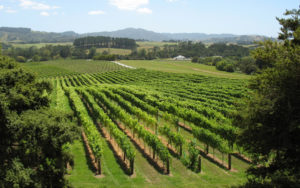 New Zealand has become a well-known and well-respected wine country in just 20-25 years. It started with the Sauvignon Blanc wines from Marlborough. Today the country is not only about Sauvignon Blanc. There are a variety of grapes that grow in different types of soils and different types of climate on both the North and the South Island. We will do many wine tastings but we will also have time to admire the breath-taking nature and to get to know the traditional culture.
New Zealand has become a well-known and well-respected wine country in just 20-25 years. It started with the Sauvignon Blanc wines from Marlborough. Today the country is not only about Sauvignon Blanc. There are a variety of grapes that grow in different types of soils and different types of climate on both the North and the South Island. We will do many wine tastings but we will also have time to admire the breath-taking nature and to get to know the traditional culture.
We will visit the well-known wine regions of Hawke’s Bay, Martinborough, Marlborough and Central Otago. We want to show you as much as possible of the country so we are going by bus from Auckland on the North Island all the way down to Queenstown on the South Island. We go to New Zealand in March and in November 2019. The March tour is already fully booked. In November it is late spring with mild weather and a beautiful lush nature.
Book your wine tour to New Zealand now, an experience and an adventure! New Zealand wine tour, November 20 – December 5, 2019.
Don’t be an egoist! Share with your friends and other wine enthusiasts! Forward the Brief to your friends! Suggest that they sign up for a free subscription !
© Copyright BKWine






